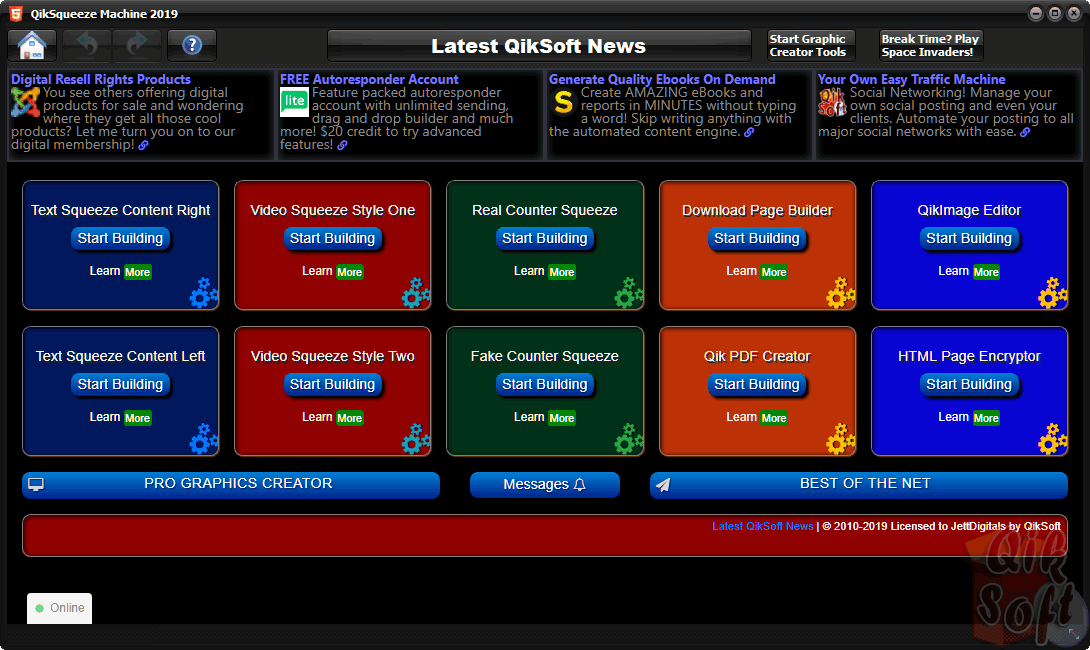
If VLC can do it, this isn’t too much to ask. For instance, while you can transcode OGG Theora and MKV, many such files didn’t play back in the preview window. I ran into a few more foibles in my hands-on. If you’re experiencing slow load times, check this dialog to disable VST instruments you don’t need.
#Sorenson squeeze 10 system requirements pro
Squeeze 10 Pro supports audio processing via VST plugins, though it also loads VST instruments.

Currently, you must de-select them one at a time. It’s nice that Squeeze 10 Pro allows you to use VSTs to process the audio in your transcoding jobs, but it shouldn’t waste time loading VST instruments, and it should be easier to disable them en masse.
#Sorenson squeeze 10 system requirements software
The time bandit turned out to be loading the myriad VST plug-ins I have installed for my music creation software (DAWs). However, in my hands-on, it took almost 45 seconds to load on my Core i7-3770/SSD-based system. Squeeze 10 Pro is very fast-encoding, being multi-threaded and utilizing all available cores of your CPU for many jobs. At the bottom of the options pane you’ll find Notifications and Reviews-the local repository for the messages you receive about your encoding jobs from cohorts and clients who have seen them on Sorenson’s Stream (née 360) online posting and reviewing service. Then there are the Publishing Options-a fancy name for uploading your finished videos to YouTube, Amazon S3, Akamai and other services. There are also filters such as sepia, de-interlace, watermark, time code, etc. Squeeze’s output options, called Audience Presets, are pre-configured output templates for everything from cell phones to Blu-ray to YouTube. At the bottom are message you receive from clients or others who’ve inspected your work online at Sorenson 360. Notice the myriad output formats and destinations.

Squeeze 10 Pro’s interface is nothing if not drag-and-drop elegant. You can open existing files manually (drag and drop is supported), have the program automatically add files placed in a “watch” folder, or capture video from an AV source.

Generally speaking, you create a job by opening a file, then add output options either by selecting them and clicking the Apply button, or dragging them to the job. The main window is laid out with input functions, output formats and filters in a pane to the right and the preview and jobs panes to the right. It looks professional, which of course adds to its perceived value. Using Squeeze is easy, and its interface is pleasing to the eye. It’s a handy time-saving feature, as is the ability to encode to different bit-rates within the same job which the program already possessed. It has its foibles, but it’s the real deal.Īside from adding support for HEVC and VP9, Squeeze’s handiest new feature is its ability to encode once, then apply the various multimedia containers, such as MOV, MP4, and MKV. However, for those who transcode videos on a regular basis, its batch processing, online review facility, and newfound support for HEVC (High Efficiency Video Codec, aka h.265) and Google’s open format VP9 make it a very powerful tool. Sorenson Squeeze Pro 10 isn’t for the average consumer-at $749, it’s far too expensive.


 0 kommentar(er)
0 kommentar(er)
